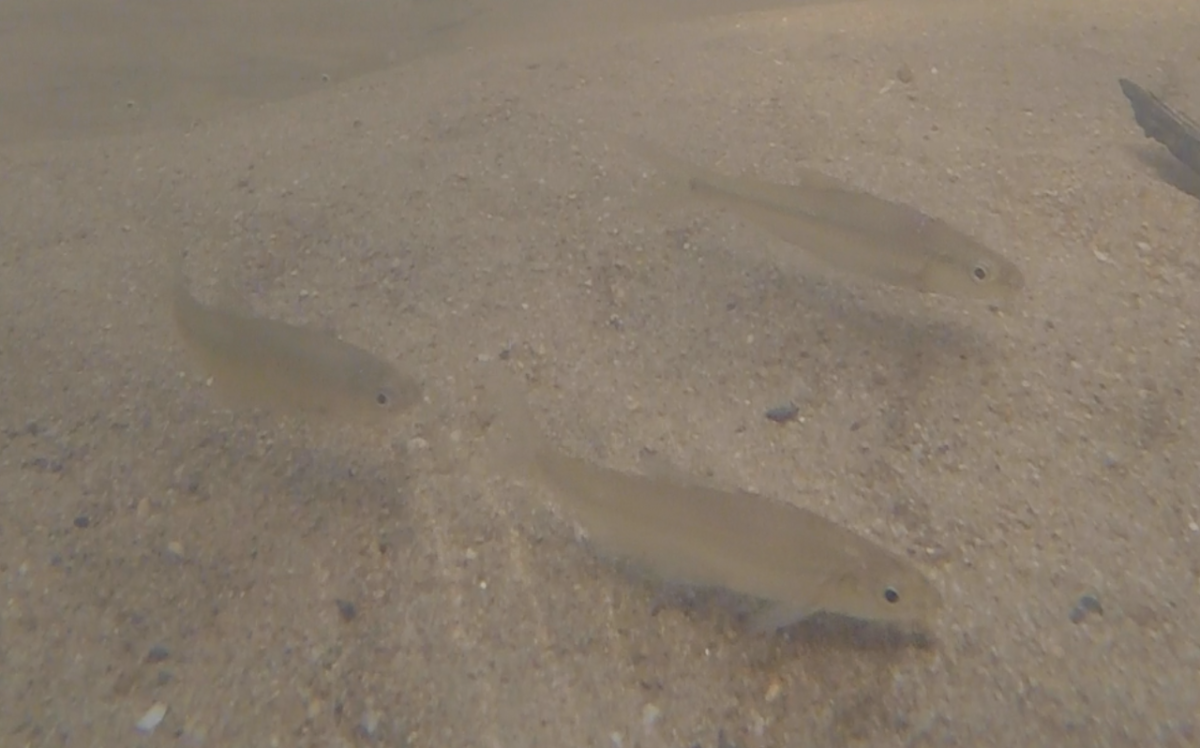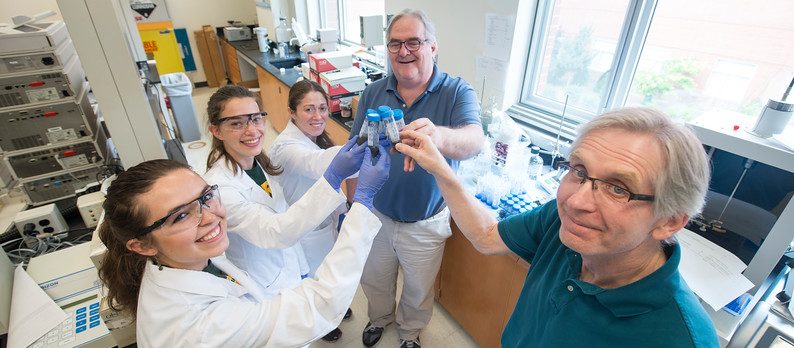Have you been following last summer’s OSCAR research on micropollutants in the Potomac? Are you an undergrad who would you love a PAID summer research experience like that? There are TEN positions open!
Apply now at https://gmu-csm.symplicity.com/
Have you been following last summer’s OSCAR research on micropollutants in the Potomac? Are you an undergrad who would you love a PAID summer research experience like that? There are TEN positions open!
Apply now at https://gmu-csm.symplicity.com/
Led by principal investigators Amy Fowler and Kim de Mutsert, the Summer Team Project looked at the effects of micropollutants on the Potomac River watershed. Projects were funded by the Students as Scholars at Mason as well as the Patriot Green Fund, and the videos were produced by graduate student, Chelsea Gray, thanks to the Virginia Sea Grant.

Written by: Jessie Melton
River herring, Alosa pseudoharengus and Alosa aestivalis, are an anadromous fish species that migrate from marine waters through estuaries to freshwater nurseries in order to spawn and lay eggs. River herring have historically been a valuable commercial species in fisheries, but the stocks collapsed throughout their native region along the Atlantic Coast since the 1990s. The Potomac Environmental Research and Educational Center (PEREC) has conducted an ongoing study of Gunston Cove for the past three and a half decades, and has incorporated the monitoring of river herring population to aid in determining whether or not the moratorium is beneficial to the decline in river herring abundance.
OSCAR student Heather Nortz talks about her summer 2017 research. Led by principal investigators Amy Fowler and Kim de Mutsert, the Summer Team Project looked at the effects of micropollutants on the Potomac River watershed. Projects were funded by the Students as Scholars at Mason as well as the Patriot Green Fund, and the videos were produced by graduate student, Chelsea Gray, thanks to the Virginia Sea Grant.
OSCAR students Lisa McAnulty and Tabitha King talks about their summer 2017 research. Led by principal investigators Amy Fowler and Kim de Mutsert, the Summer Team Project looked at the effects of micropollutants on the Potomac River watershed. Projects were funded by the Students as Scholars at Mason as well as the Patriot Green Fund, and the videos were produced by graduate student, Chelsea Gray, thanks to the Virginia Sea Grant.
OSCAR student Sammi Alexander talks about her summer 2017 research. Led by principal investigators Amy Fowler and Kim de Mutsert, the Summer Team Project looked at the effects of micropollutants on the Potomac River watershed. Projects were funded by the Students as Scholars at Mason as well as the Patriot Green Fund, and the videos were produced by graduate student, Chelsea Gray, thanks to the Virginia Sea Grant.

Written by: Chelsea Gray
Each year, researchers and graduate students from PEREC gather data on Gunston Cove, located just downriver from the Norman M. Cole Jr. Pollution Control Plant. This study has been used to determine the health of the Potomac River for over three decades.
Cindy Smith’s Human Dimensions and Biomes class (EVPP 302) was highlighted recently in Mason Spirit.
She found that some environmental science and biology majors were having difficulty finding jobs without a graduate degree. Looking for answers, she surveyed 10 employers and found that what they wanted most was were employees who had worked on “real” research projects and had “real” field experience. So she reworked the course to include an energy audit of a campus building, which is conducted in partnership with Mason’s Offices of Sustainability and Facilities….
“One of the best parts about my job is the interaction with the students during plant tours—and getting new ideas from them that we can possibly use to save energy,” says Jeffrey Counts, superintendent of the heating and cooling plant in Facilities Management.
Read the rest here.

Written By: Heather Nortz
How many prescription or over the counter drugs are currently in your medicine cabinet? Did you know that your body doesn’t absorb 100% of the drugs you take? What do you do with your expired or unused drugs? Do you think wastewater treatment or drinking water plants remove pharmaceuticals from water before they release it into the environment or to your well or water tower?

By: Lisa McAnulty
I once heard someone say that if you brought a glass down to the Potomac River and took a long swig of its water, you would have swallowed a small dose of antidepressants. While drinking Potomac River water is highly discouraged, there may be a hint of truth to this statement. Thousands of pharmaceuticals and personal care products are on the market, and many inevitably make their way into rivers and streams through wastewater discharge or other sources. While we might not necessarily be chugging river water on a daily basis, many organisms call the Potomac River home and can’t escape the barrage of these so-called emerging contaminants. However, “emerging contaminants” is a misleading term for pharmaceuticals and personal care products, which have been in our waters for many years. It’s only recently that scientists developed methods sensitive enough to precisely measure trace quantities of these pollutants.
